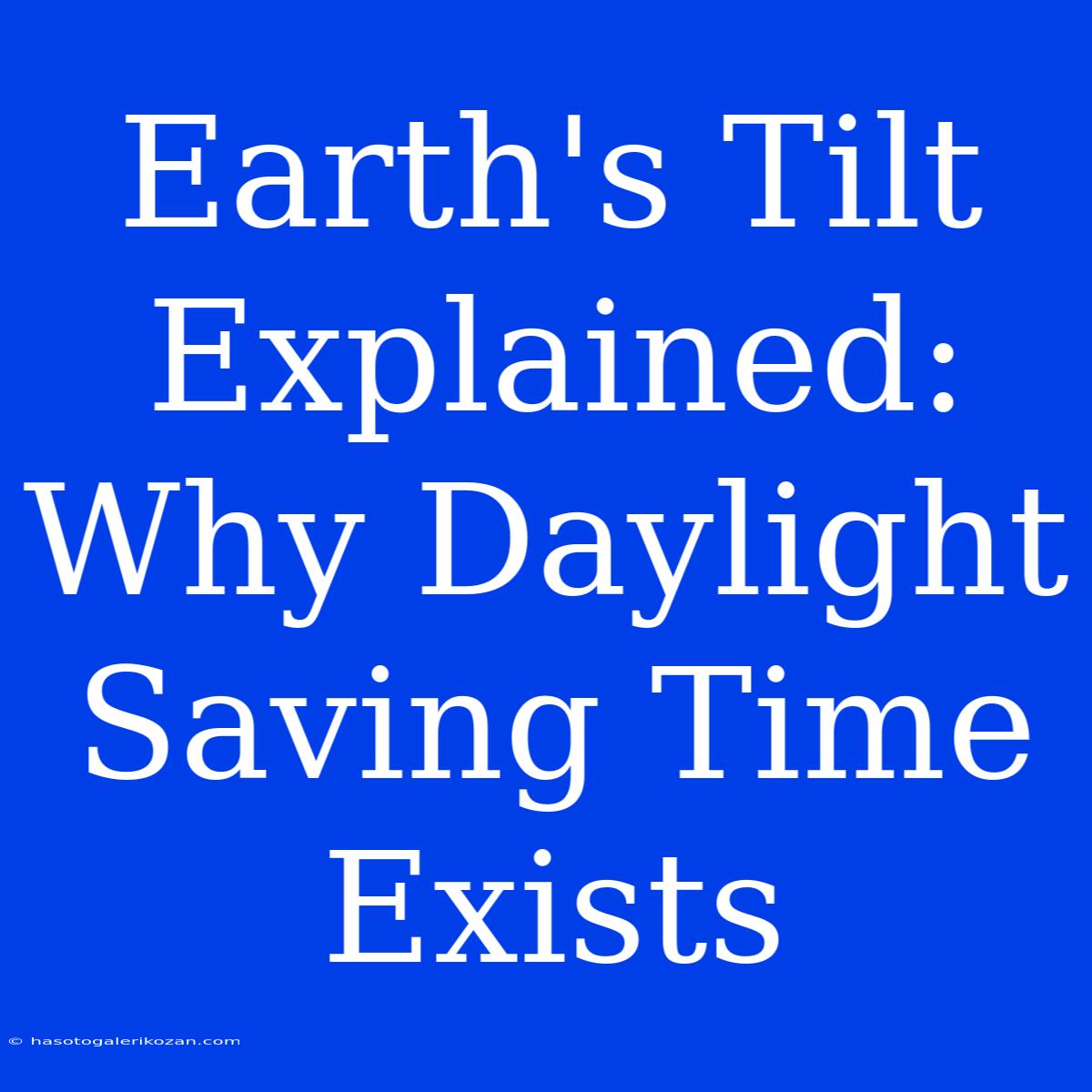Earth's Tilt Explained: Why Daylight Saving Time Exists
Have you ever wondered why we have daylight saving time? The answer lies in the Earth's tilt and its impact on the amount of sunlight we receive throughout the year. This article will delve into the fascinating connection between Earth's tilt, seasons, and the need for daylight saving time.
The Earth's Tilt: A Key to Seasons
The Earth is tilted on its axis at approximately 23.5 degrees. This tilt isn't random; it's the reason why we experience different seasons throughout the year. As the Earth orbits the sun, its tilted axis causes different hemispheres to receive varying amounts of sunlight.
During summer in the Northern Hemisphere, the North Pole is tilted towards the sun, resulting in longer days and shorter nights. Conversely, the South Pole is tilted away from the sun, leading to shorter days and longer nights. This scenario reverses during the Northern Hemisphere's winter.
Why Daylight Saving Time?
So, how does this relate to daylight saving time? The primary reason for daylight saving time (DST) is to make better use of daylight hours during the warmer months. By "shifting" the clock forward an hour, we can extend daylight into the evening, which is beneficial for several reasons:
- Energy Savings: By using less artificial light during the evening, we can reduce our energy consumption.
- Increased Activity: Longer daylight hours encourage people to be more active outdoors, fostering a sense of community and well-being.
- Economic Benefits: Businesses and retailers benefit from increased consumer activity during the extended daylight hours.
How Daylight Saving Time Works
Daylight saving time typically begins in the spring and ends in the fall. During this period, we "spring forward" by setting our clocks ahead one hour. This effectively shifts the clock back to what it would be if the Earth were not tilted.
In the fall, we "fall back" by setting our clocks back one hour. This aligns the clock with the natural sun time, as the days become shorter.
The Debate Surrounding Daylight Saving Time
While daylight saving time has its proponents, there are also critics who argue against its implementation. Some of the arguments against DST include:
- Health Concerns: The disruption to our natural sleep patterns can lead to health problems like sleep deprivation and mood disorders.
- Safety Risks: Some studies have shown that traffic accidents increase during the transition periods.
- Negative Impacts on Productivity: The shift in sleep cycles can lead to decreased productivity and cognitive function.
Despite these concerns, daylight saving time remains a popular practice in many countries around the world. The debate continues, and the future of DST remains uncertain.
In Conclusion
The Earth's tilt plays a crucial role in our understanding of seasons and the need for daylight saving time. While DST offers potential benefits, the decision to implement it is often influenced by cultural, economic, and environmental considerations. As the debate continues, it's important to weigh the potential benefits and drawbacks carefully to determine the most appropriate course of action.
